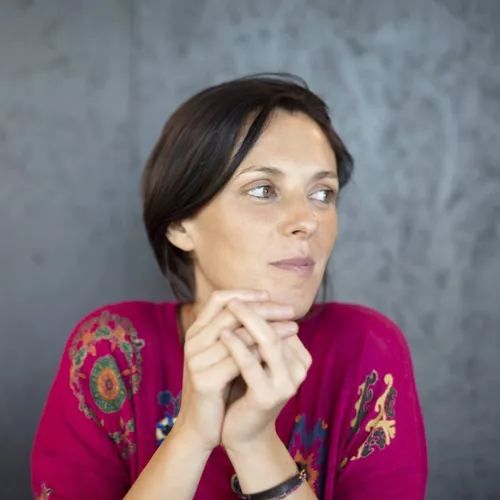
Francesca Verunelli studied composition and piano at the Conservatorio Luigi Cherubini in Florence where she earned both diplomas summa
cum laude. She went on to attend IRCAM’s cursus 1 & 2 in Composition and Computer Music specialising in electronic music. She holds a PhD from PSL University (Paris Sciences & Lettres).
In 2010 she was awarded the Silver Lion of Venice Biennale. She has been composer-in-research at IRCAM and GMEM; and resident artist of the Casa de Velasquez (Académie de France à Madrid) and the Villa Medici (Académie de France à Rome). In 2020 she was awarded the Ernst von Siemens composer's prize. In 2022 she was the recipient of the 41° Abbiati prize of the Italian critics. In 2023 she received the Orchesterpreis des SWR for her symphonic work « Tune and retune II ».
She has received commissions from prestigious musical institutions and ensembles such as IRCAM, Venice Biennale, Orchestre Philharmonique de Radio France, Milano Musica, NeueVocalsolisten Stuttgart, Accentus Chamber Choir, Lucerne Symphonic Orchestra, Court-Circuit ensemble, 2e2m ensemble, International Contemporary Ensemble, Festival d'Aix- en-Provence, GMEM Marseille, CIRM Nice, the French State, FACE Foundation, Donaueschinger MusikTage, Orchestre Philharmonique du Luxembourg, Wittener Tage für neue Kammermusik, Philharmonie de Paris, Klangforum Wien among others.
Her music is regularly performed in Europe, the USA and Japan.
The poetic origins of Tune and retune go back to my very first experiences listening to an orchestra. I clearly remember the strong impression that listening to symphonic concerts for the first time made on me, when I was very little. I felt this kind of immense breath of this huge mass of sound, and I had the intense perception of it unfolding in time. I can’t express it in words, but I think that anyone who loves symphonic music can understand what I’m talking about.
This piece is a way to remember that breath of the orchestra that’s part of my earliest memories.
From a technical point of view, the piece revolves around a big question: Can the inner temporality of sound and the semantic tempo of the musical discourse be an expression of each other?
This also has to do with a second observation, which regards timbre.
As far as I’m concerned, timbre is neither accidental nor an “effect”. It is the carrier, the vehicle for writing with temporal and poetic momentum.
Timbre does not exist outside tempo, in the same way that harmonic syntax cannot exist outside tempo.
Timbre and harmony are both part of the same thing, in that timbre has a complex (un)harmonic content – exactly like the symbolic harmonic content of a chord. It acquires “meaning” in the temporal discourse.
Classical orchestration is none other than modifying, enriching, simplifying or altering in so many possible ways the harmonic discourse, thanks to the spectral content of the elements of sound in play. Just take a look at what happens to a brass sound when it follows the indication “from ordinario to cuivré” and you’ll realize how much timbre is always a question of harmony, and thus a question of harmonic discourse, and, when it comes down to it, of tempo and form.
I wanted to push this observation to its most extreme consequences.
Francesca Verunelli